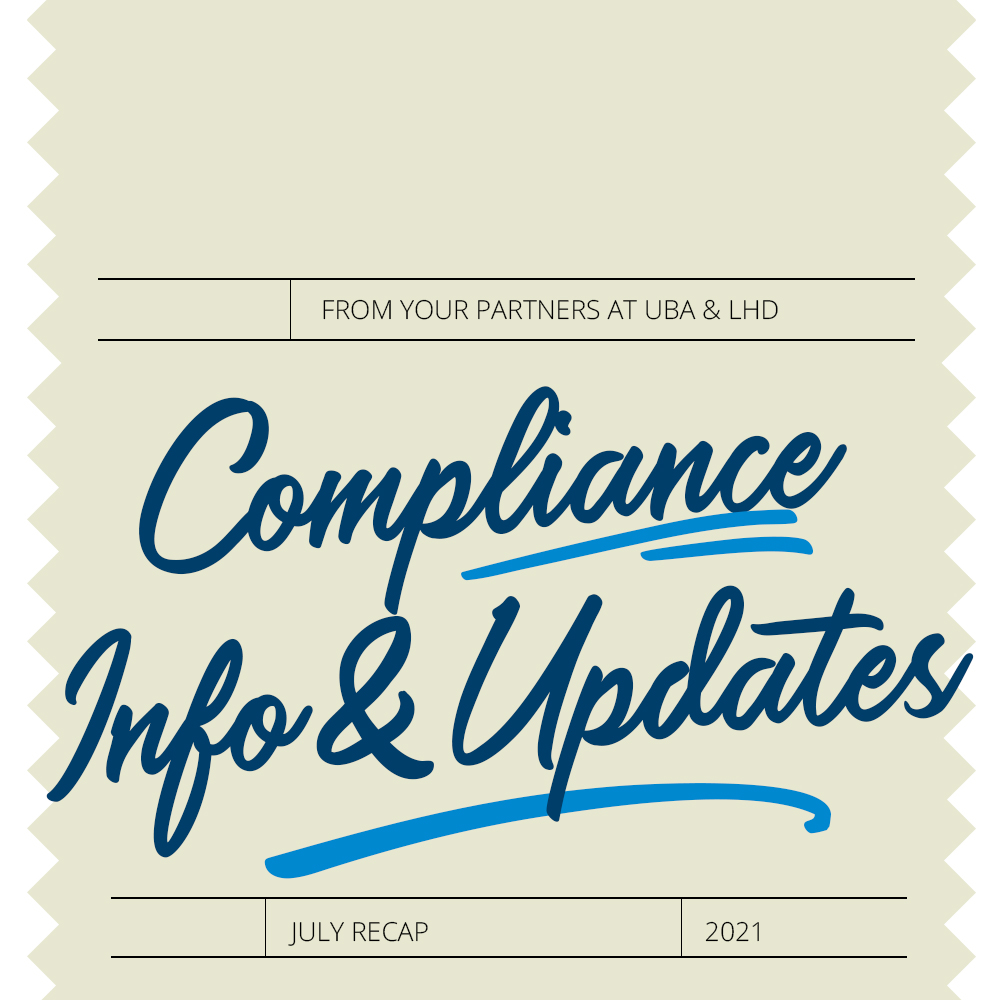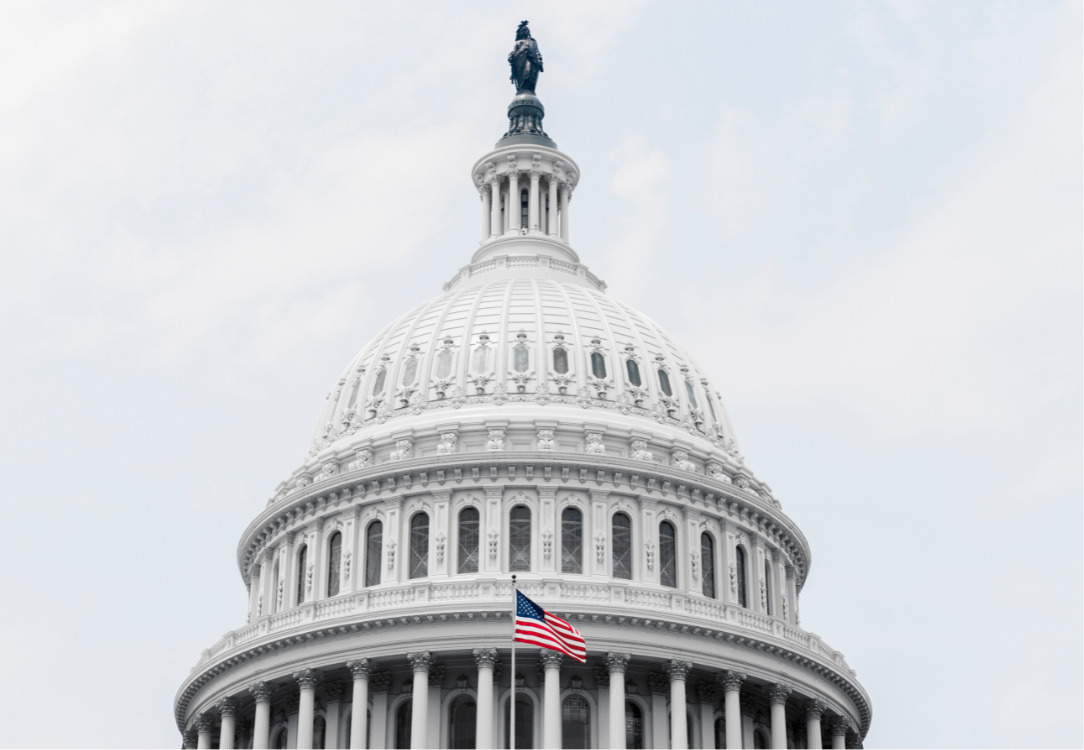July 2021 Recap
July 2021 was a quiet month in the benefits industry, largely due to the summer vacation season and the July 4th Independence Day holiday. Importantly, however, the U.S. Departments of Health and Human Services, Labor, and Treasury, along with the Office of Personnel Management (collectively, the “Departments”), issued an interim final rule (IFR) to explain provisions of the No Surprises Act (the Act) that passed as part of sweeping COVID-19 relief legislation signed in December 2020. Additionally, the Internal Revenue Service (IRS) released Notice 2021-46 (Notice) to clarify lingering questions employer plan sponsors and other interested parties have been asking since the American Rescue Plan Act of 2021 (ARPA) became law in March 2020.
No Surprises Act Interim Final Rule
Under the Act, group health plans, or health insurance issuers offering group or individual health insurance coverage, that provide or cover any benefits for services in an emergency department of a hospital (including a hospital outpatient department that provides emergency services) or an independent freestanding emergency department (in-network or out-of-network, also referred to as participating and nonparticipating), must cover the emergency services with no preauthorization and without regard to any other term or condition of such coverage (other than exclusion or coordination of benefits, or an affiliation or waiting period, permitted under the Patient Protection and Affordable Care Act (ACA), and incorporated pursuant to ERISA and the Internal Revenue Code, and other applicable cost-sharing).
If the emergency services are provided by a nonparticipating provider or nonparticipating emergency facility, the plan or issuer must cover the emergency services without imposing requirements for prior authorization or any limitation on coverage that is more restrictive than the requirements or limitations that apply to emergency services received from participating providers and participating emergency facilities. Also, a plan may not apply higher cost-sharing than would apply if emergency services were provided by a participating provider or a participating emergency facility. The cost-sharing requirement is calculated as if the total amount that would have been charged for emergency services by the participating provider or participating emergency facility were equal to the recognized amount (the amount specified by state law, or a qualifying payment amount, or an amount determined under an All-Payer Model Agreement entered into by the state) for the services, plan or coverage, and year.
The IFR specifies that:
- Group health plans (including grandfathered plans) that cover emergency services must treat those services as in-network, without requiring pre-authorization, regardless of where they are provided.
- Patient cost-sharing, such as coinsurance or a deductible, cannot be higher for emergency and non-emergency services than if such services were provided by an in network doctor, and any coinsurance or deductible must be based on in-network provider rates.
- Ancillary care (like an anesthesiologist or assistant surgeon) at an in-network facility cannot be treated as out-of-network even if provided by an out-of-network provider.
- Health care providers and facilities must give patients a plain-language consumer notice explaining that patient consent is required to receive care on an out-of-network basis before that provider can bill at the higher out-of-network rate.
The IFR also addresses new notice requirements that the Act added to ERISA. Under these requirements, group health plans will have to disclose information about new surprise and balance billing protections as well as certain other information. In general, group health plans must post the required information beginning January 1, 2022.
The Departments have issued a model disclosure notice that group health plans may use to satisfy the new balance billing disclosure requirements. The preamble to the IFR states that the Departments will consider use of the model notice according to its accompanying instructions to be good faith compliance with the Act’s disclosure requirements. Further, the Departments
provide that if a state develops model language for its disclosure notice that is consistent with the Act’s federal notice requirements, the Departments will consider a plan that uses the state developed model language in good faith to have complied with the federal requirement to include information about state law protections. Please see Part 1 and Part 2 of our Advisor on
the No Surprise Billing Interim Final Rule for more detail.
Additional ARPA Guidance
On July 26, 2021, the Internal Revenue Service (IRS) released Notice 2021-46 (Notice) to clarify lingering questions employer plan sponsors and other interested parties have been asking since the American Rescue Plan Act of 2021 (ARPA) became law this past March. The Notice supplements prior guidance the IRS released in May in Notice 2021-31 and addresses extended COBRA coverage periods, interaction with state continuation coverage and which entities can claim available IRS tax credits for providing Consolidated Omnibus Budget Reconciliation Act of 1985
(COBRA) premium assistance to assistance eligible individuals (AEI).
Q&A 5 of the Notice provides that for state-mandated continuation coverage, the common law employer is the entity entitled to receive the tax credit even if the AEI pays premiums directly to the insurer for state coverage. Additionally, many employers have asked which entity can claim the credit if a group health plan (other than a multiemployer plan) covers employees of several members of a controlled group of companies under IRS rules. Q&A 6 states that each member of a controlled group generally can claim the corresponding credit for its own AEI. So, the employer who actually pays the wages and remits taxes on behalf of an AEI will claim the tax credit. Please see our Advisor titled “ARPA COBRA Premium Assistance IRS Q&A Guidance”
for more detail.


